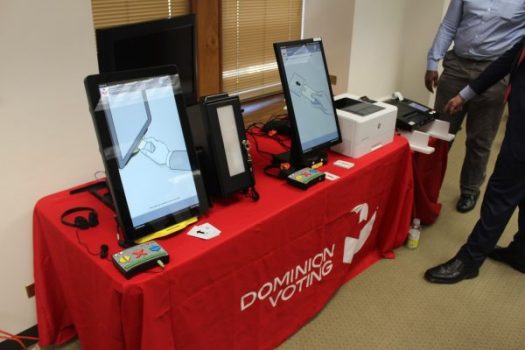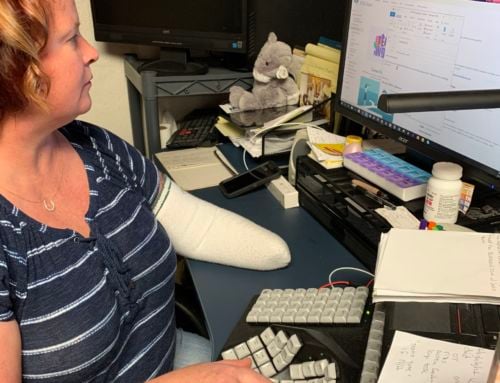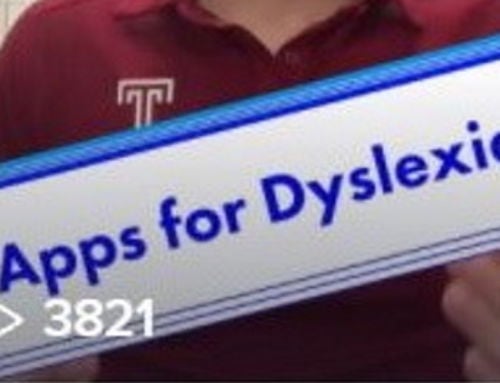Barriers to the Ballot Box

Thanks to Laura Hall of the Michigan Assistive Technology Program for recounting her experience troubleshooting at the polls.

The accessible voting systems at Laura Hall’s polling location (Dominion Voting Systems)
When I arrived at my polling place Tuesday morning, like many voters, I was excited to take part in this important election. I felt prepared because I had ensured I was registered to vote, had found my polling place, researched the candidates and issues, and filled out a sample personalized ballot (that I took with me) on the Vote411 website. As I handed my ID and paperwork to the poll worker, however, I saw a look of dismay fall over her face when I told her I would like to use the electronic voting machine that is required to be at every polling place.
“We were having trouble with it this morning,” she replied. “It seemed like there was a short in the connectors.” But she noted that someone had come to take a look at it, and they’d reported everything was fine. “So let’s give it a shot.”
Unfortunately, everything was not fine. As I prepared to vote there was a scurry of activity. People tried to identify who knew how to initialize the ballot in the Dominion machine (note: in other areas of the state the Hart InterCivic and the Election Systems and Software machines are used). It seemed like no one really knew what they were doing as they opened their giant election binder and began looking at the directions.
I asked whether, as poll workers, they were trained on the machines. Apparently, they were, but very briefly, according to the poll worker. I was excited when they were able to get the machine working with relatively no problems.
The Dominion voting machine offers several accessible features: touchscreen, audio playback with headphones, audio-tactile interfaces (a controller with arrows to tab through options with a large button to make your selection), sip and puff, and paddles (large red and blue buttons to navigate through your ballot and make selections). You can also enlarge the text and change the contrast of the text on these machines.
I chose to use the touchscreen option with the audio input to help me ensure I made the choices I intended. I was able to navigate my ballot with relative ease and was happy that it didn’t take too long. I selected to print the ballot and then my heart sank.
My ballot only partially printed. The screen on the voting machine instructed me to contact an election official.
The poll worker came over, looked at the screen with a heavy sigh, checked the printer for a paper jam, couldn’t find one, and shrugged her shoulders, out of ideas. What was the next person who requested the machine going to do?
They offered to help me fill out a paper ballot, but I would need two poll workers affiliated with different political parties to be present. I am able to fill out a paper ballot but prefer the electronic voting machines. I have trouble filling in the small bubbles on a paper ballot and using the marker that is chained to the table (often on the opposite side on my non-dominant hand). Nonetheless, my vote was tabulated, and I left the polling place about 45 minutes after I had arrived due to all of the hassle.
Once in the car, I decided to call the Election Protection Hotline at 1-866-OUR-VOTE, and report the problem. I was immediately connected to a representative who listened to the details of my experience and said that he would “escalate” my call and get someone to my polling place right away to take care of the problem.
Why had I chosen the electronic voting machine instead of an absentee ballot or paper ballot in the first place? Precisely to uncover these problems! Every person with a disability has the right to an accessible polling place that has a (working) electronic voting machine.
Learn more about accessible voting systems and your rights as a voter with a disability.
Monthly Blog Digest
Search the blog
State AT Program Blogs
California
Florida
Indiana
Kentucky
Louisiana
Maryland
Massachusetts
Michigan
Montana
North Carolina
North Dakota
Utah
State AT Program Blogs
The AT3 Center, the Association of AT Act Programs (ATAP), and the Administration on Community Living (ACL) make no endorsement, representation, or warranty expressed or implied for any product, device, or information set forth in this blog. The AT3 Center, ATAP, and ACL have not examined, reviewed, or tested any product or device hereto referred.






